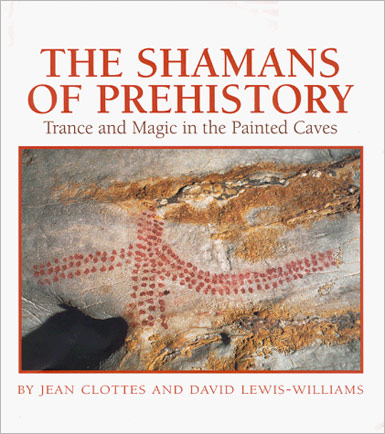
The Shamans of Prehistory
By Jean Clottes & David Lewis-Williams
This startling book reveals a new way of understanding the remarkable images painted or etched on rock walls by the people of prehistory.
Noting the similarity of prehistoric rock art with that created by some contemporary traditional societies, archaeologists Jean Clottes and David Lewis-Williams suggest that the ancient images were created by shamans, powerful individuals who were able to contact the spirit world through trance and ritual. In many societies throughout history, shamans have been consulted to try to change the weather, foretell the future, control the movements of animals, and converse with the dead.
With an abundance of full-color illustrations, Clottes and Lewis-Williams draw on neuropsychology and ethnography to follow prehistoric shamans into their trance states. The authors shed light on what these rock artists were thinking and how they may have worked. On these pages, Paleolithic art and life are seen in a new and astonishing way.
Category: Paleolithic Beginnings
Subjects: archaeology, cave art, prehistory, shamans
- All Books by Section
- Our Contributors' Book Reports
- Books Referenced in Human Journey Sections:
- Journey of the Human Mind
- Discovering Our Distant Ancestors »
- The Evolution of Language
- Ideas that Shaped Our Modern World »
- Paleolithic Beginnings
- Connecting with the Gods
- Axial Age Thought
- Origins of Christianity
- Origins of Islam
- The Journey of Classical Greek Knowledge to the Western World
- Stories and Storytelling
- Tools and the Development of Contemporary Society »
- A Sustainable Planet
- The Changing World Economy »
- Health and Education in the Modern World »
- Our Mind in the Modern World »





